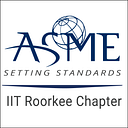Wireless Beams| How US Navy used Beams to transmit Energy?
INTRODUCTION
Transmitting power over long distances has been around for over a century. The concept of wireless power has been around for decades, but it is becoming more and more popular as humanity seeks to change its power systems. At the same time, setting up solar farms on other planets and restoring energy to Earth is far from accurate. By the 1970s, technology was mature enough to play a vital role in the idea of establishing colonies in space for the construction of large solar panels to illuminate energy back into Earth. In what it describes as the most important demonstration of its kind during the first half of the century, the US Naval Research Laboratory (NRL) was powered by 1.6 kW over a mile (3,280 ft) using a microwave beam US Army Research Field in Maryland.
PRINCIPLE
The principle is simple enough. Electricity is converted into microwaves, then concentrated in a solid receiver column formed by the so-called rectenna elements. These simplest components include an x-band dipole antenna with an RF diode. When the microwaves hit the rectenna, the features produce DC.
HOW DOES THIS WORK?
Despite the initial skepticism, the microwave light proved to be incredibly efficient. The Department of Defense tasked the NRL team to develop a safe and sustainable energy project — Microwave (SCOPE-M), to test the technology’s performance.
Using a 10-GHz microwave beam, SCOPE-M is suspended in two locations. The first was the US Army Research Field in Blossom Point, Maryland, and the second was the Haystack Ultra Wideband Satellite Imaging Radar (HUSIR) transmitter at MIT, Massachusetts. The frequency was chosen because it could not only shine even in heavy rain with a loss of less than 5 percent, but it is also safe to use under international standards where birds, animals, and humans live. The system does not require automatic cutting for previous laser-supported designs.
In the Maryland trials, the beam was 60 percent effective. The Massachusetts test did not reach the same power peak but had a higher rating, introducing more power.
IT’S FUTURE
SCOPE-M technology may one day be used to transfer power to Earth or to solar power stations to provide electricity to the national grid 24 hours a day, 365 days a year. However, the urgent request of the DOD is of interest to deliver power directly to the local army, eliminating the need for dangerous oil supplies.
CONCLUSION
While SCOPE-M was an earth-wide light connector, it was a good testament to the concept of space-lighting power,” said Brian Tierney, SCOPE-M’s electrical engineer. “The biggest advantage of the DOD’s Earth energy potential is to reduce reliance on military fuel supply, which could be at risk of attack.
SUGANDHA GUPTA is the writer of this article. Views expressed, and information provided belong solely to the author.
